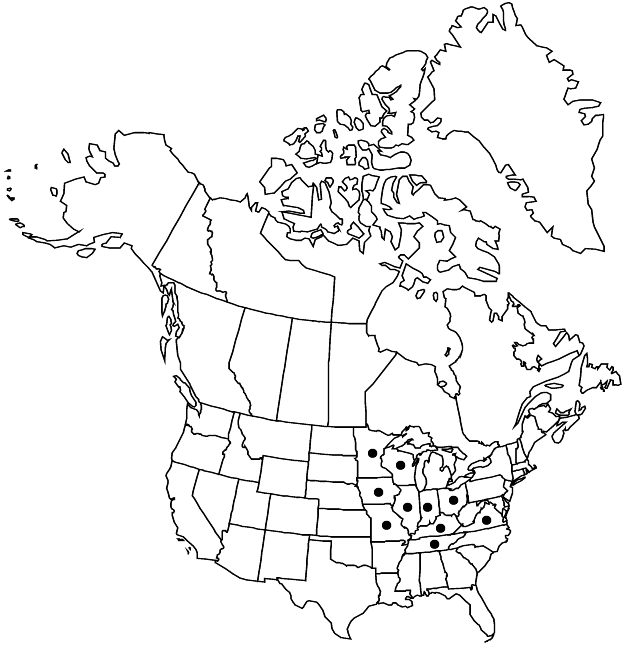Difference between revisions of "Sullivantia sullivantii"
Mem. Torrey Bot. Club 5: 178. 1894,.
FNA>Volume Importer |
FNA>Volume Importer |
(No difference)
| |
Revision as of 20:28, 24 September 2019
Plants not stoloniferous. Flowering stems 5–40 cm, erect to ascending. Leaves: blade 1–12 cm wide, 1–2 times toothed, 7–13-lobed for 1/4–1/2 length to shallowly and somewhat irregularly 7–25-lobed; lobes cuneate-oblong to crenate and 1–2 times denticulate to coarsely subcrenulate, margins erose with long bristles to lacinate. Inflorescences erect to decumbent, primary and higher-order branches ascending relative to central axis. Flowers: hypanthium tubular-campanulate, portion distal to adnation to ovary not marked by conspicuous flaring, 1.3–3.2 × 1.2–2.1 mm, stipitate-glandular proximally; sepals triangular-ovate to lanceolate-oblong, not as broad as long at apex, 0.8–1.5 × 0.6–1.1 mm, apex acute; petals unlobed, 1.7–3.5 mm, ovate and abruptly narrowed in claw to lanceolate and gradually narrowed into claw, 0.7–1.6 mm wide; ovary ca. 1/2 inferior. Capsules cylindric-ovate to cylindric-elliptic, 3–7.5 × 1.3–3.2 mm, beaks ± spreading. Seeds usually tan, rarely red-brown, 0.7–1.2 × 0.2–0.5 mm, main body (excluding winged margins) 0.4–0.7 mm. 2n = 14.
Phenology: Flowering May–Jul.
Habitat: Moist limestone and sandstone cliffs
Elevation: 300-700 m
Distribution

Ill., Ind., Iowa, Ky., Minn., Mo., Ohio, Tenn., Va., Wis.
Discussion
Selected References
None.
